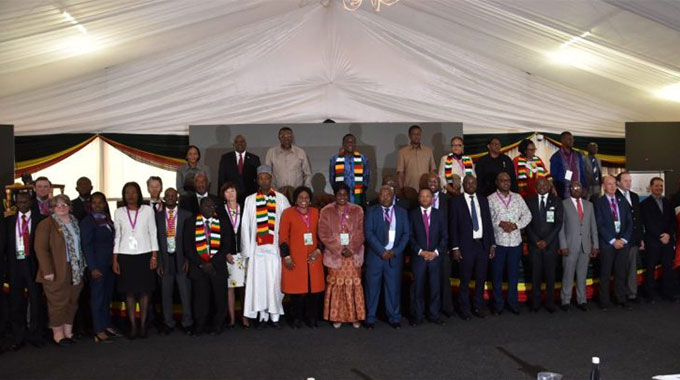President’s vision for land re-distribution realised
Yoliswa Dube, Senior Features Reporter
Few if any understood President Mugabe’s vision back in 2000 when the land re-distribution exercise began.
Zimbabwe would not be fully independent had her indigenous people not been given agricultural land.
After the protracted liberation struggle to liberate the country, President Mugabe knew that unless indigenous blacks were empowered through land ownership, the struggle would have been in vain.
Before independence most of the country’s agricultural land belonged to whites, leaving blacks in semi-arid regions while they (whites) lived on fertile, expansive lands.
The land re-distribution exercise was necessary in reclaiming ownership of the country and its resources and now, Zimbabwe has a well-developed and diversified agricultural sector, producing food crops, cash crops, and livestock.
But this took a man of bold character, a man who would not back down on his decision, his principles and his vision for the people who believed in his leadership.
Although agriculture accounted for only 28 percent of Gross Domestic Product in 1998, it engaged about 66 percent of the labour force in 1996. Some 27 percent of formal sector employment was in the agriculture sector in 1997.
President Mugabe and his government have boosted the agricultural sector by providing electricity in rural areas through the Rural Electrification Programme and provision of free seed, fertiliser and implements.
The Rural Electrification Programme has been beneficial to many farmers as they can now use electricity for irrigation and other purposes.
Zimbabwe has started to enjoy dividends from the Command Agriculture Scheme which came after the country recorded food deficit and has turned vast tracts of land into greenbelts of crops.
The programme is meant to produce two million tonnes of maize under 400 000 hectares of land.
Farmers who received crop inputs under Command Agriculture are confident of surpassing the targeted yield of five tonnes per hectare.
Zimbabwe requires 1,5 million tonnes of maize for both human and livestock consumption.
There is no longer any doubt that Command Agriculture and a good rainfall season will trigger an over-supply of commodities into markets and storage facilities at household level.
Over the past decades, Zimbabwean agriculture has changed markedly in terms of actors and commodities.
Since 2000, there has been a drastic change in farmer characterisation and farming systems.
Previously, the major actors were communal smallholder farmers, resettlement farmers, small-scale commercial farmers and large scale commercial farmers who were mostly white.
Communal farmers used their Union to forge strong links with buyers and processors.
On the other hand, commercial farmers were not properly organised through their unions for coordinated marketing through the Grain Marketing Board, Cold Storage Commission and other parastatals.
Very few black farmers were involved in horticulture so the Horticulture Promotion Council was largely an institution for white commercial farmers who exported fruits, flowers and other horticultural commodities.
Given that the majority of black farmers had to balance the production of a few commercial commodities and diverse traditional food security crops which also found their way to the market, market gluts reared their ugly right from the dawn of organised agriculture.
Now, Zimbabwe produces much of its own food, except in years where drought affects maize and wheat production. The staple food crop is maize, and other major cereal crops are barley, millet, sorghum, and wheat.
Horticulture is also a major export crop while ostrich and game farming have become increasingly important over the last few years
Tobacco, which has been grown in Zimbabwe for over 100 years and has been the country’s largest export earner accounting for a significant amount of all foreign currency earnings still thrives.






Comments